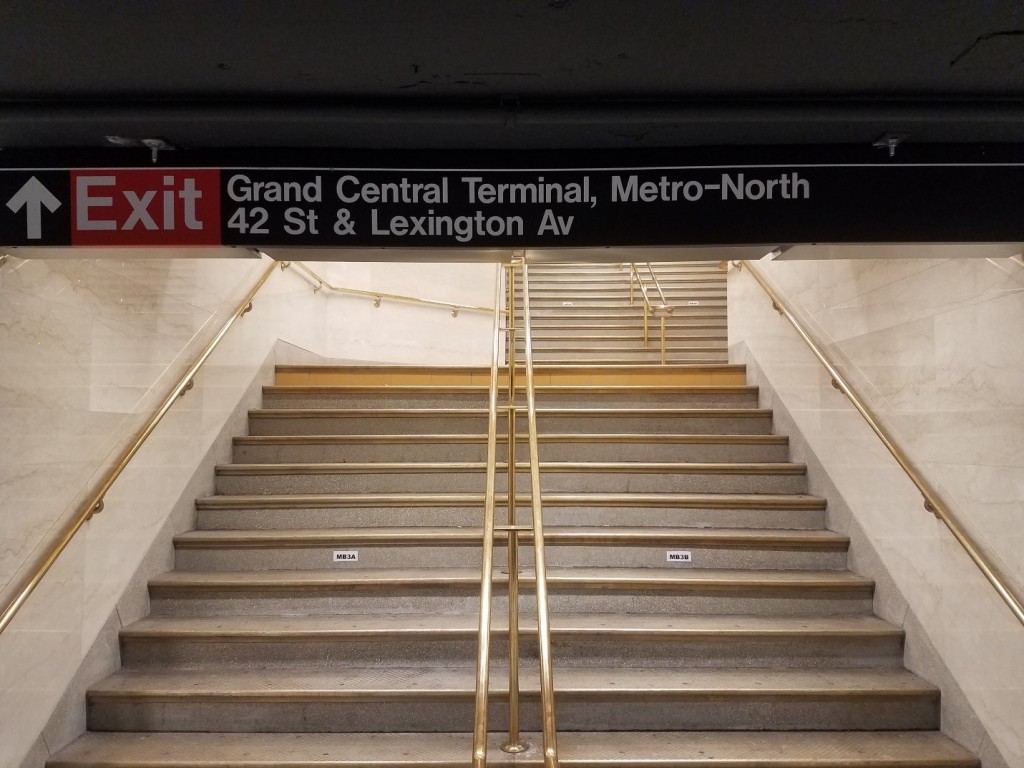On August 9, New York City’s City Council approved the Greater Midtown East Rezoning plan. In a reassuring collaboration between the City’s Department of City Planning (DCP), Department of Transportation (DOT), and the state-run MTA, the rezoning shows a rare coming together in politics and policy between City and State. Mayor Bill De Blasio and Governor Andrew Cuomo have been butting heads over the past year when it comes to fixing our transportation woes. With the recent tax proposal from De Blasio and the resurgence of congestion pricing resulting from comments by Cuomo, there has been a heated battle to determine how to best address the quickly deteriorating system. Yet among these disagreements is a glimmer of hope in the rezoning plan, and it is great to see the two governments working together to improve the subway.
The rezoning makes transit infrastructure improvements a necessity. Midtown East is home to some of the most congested stations in our system, and with this rezoning, the MTA and DCP have recognized the stress that the system will face with the additional jobs that will be created in the area. The two organizations have come together to identify what improvements need to be achieved.
The 78 block area is home to over 250,000 jobs, but has seen recent loss of major employers to the more desirable, newer buildings of Hudson Yards and the new World Trade complex. With this rezoning, the DCP, in cooperation with NYC DOT and the MTA, has implemented development bonuses for developers, creating incentives to contribute resources to subway infrastructure in exchange for greater development rights. The rezoning is projected to have major impacts on employment in the area, and the City is hoping to draw developers to reinvent the skyline to bring in additional employers.
Developers can receive development bonuses in exchange for improving transit infrastructure.
Under the rezoning, developers will be able to construct larger buildings than have been allowed in prior zoning resolutions. The change in the zoning code also includes development bonuses, allowing developers to build significantly larger buildings than is allowed as-of-right. In general, the closer the building lot is to Grand Central Terminal, the higher the bonuses that can be awarded. This means that developers now have the ability to create significantly taller buildings than were previously allowed under the old zoning code, but to reach those bonus levels they must use one of three mechanisms:
- Complete pre-identified improvements to below-grade transit infrastructure.
- Obtain development rights from landmarked buildings in the district.
- Rebuild legally overbuilt floor area for pre-1961 buildings.
These zoning changes ideally will have major impacts on subway infrastructure, especially along the Lexington line, where overcrowding is a daily problem. Improvements to below-grade infrastructure include improving congestion points and enhancing capacity between platforms, mezzanines or streets. The identified stations where improvements will be made are:
- Lexington Ave/53rd and 51st St (E,M,6)
- Lexington Ave/59th St (N,W,R,4,5,6)
- 5th Ave/53rd St (E,M)
- Rockefeller Center/47th-50th St (B,D,F,M)
- Bryant Park-5th Ave (B,D,F,M,7)
- Grand Central/42nd St (4,5,6,7,S)
The Vanderbilt Corridor rezoning of 2015 has shown the infrastructure benefits transit can receive.
Grand Central Terminal is already reaping the benefits from a transit bonus that One Vanderbilt received in 2015. One Vanderbilt is located within Midtown East, but is part of the Vanderbilt Corridor subsection that was rezoned in 2015 to allow for significant development bonuses in exchange for improvements to the Grand Central Terminal Complex. The developers behind the building will contribute an estimated $210 million in station enhancements, including the widening of stairs, addition of new stairs, increasing capacity by trimming support beams, and improving mezzanine areas.
New stairwell between Grand Central Complex and Grand Central Subway Station.
Infrastructure upgrades are costly and can take a long time to acquire funding from the MTA. With this change in the zoning code, there is now incentive for developers to fund and address “priority improvements” that the MTA has recognized. Arguably the most significant changes in priority improvements list will come in the form of ADA accessibility. As it stands, three of the six identified stations are not ADA compliant: Lexington Ave/59th St station, Bryant Park, and 5th Ave/53rd St. With development bonuses in place, there is now incentive for developers to improve ADA accessibility in East Midtown.
Lexington Ave/59th St platforms and mezzanine may get improved passenger circulation.
The priority improvement list also includes one point that may ease passenger crowding and congestion on the Lexington Ave/59th St N/R/W platform. As a result of station layout, platform crowding and congestion is often concentrated around the stairwells leading from the mezzanine and 6 line platforms. Because all the stairs at this transfer station are focused on one side of the N/R/W platform, the area quickly becomes overcrowded, as all customers are moving to and from one area. Congestion can hopefully be remedied with plans to both create new stairs between the mezzanine and the platform, as well as widen existing stairs.
The Greater Midtown East rezoning is poised to contribute millions of dollars to the identified stations throughout East Midtown. While the rezoning will help provide infrastructure improvement, there is still the question of ongoing maintenance funding that these stations will require with additional use. The city is poised to receive additional revenue in taxes as a result of new businesses and construction in the area. Perhaps the city and state can come together again to reach an agreement regarding ongoing maintenance in order to keep the future of the system in a state of good repair. The rezoning and subsequent transit bonus is a step in the right direction for infrastructure improvement along the city’s busiest corridor, but more will need to be done to address the overcrowding and future maintenance costs that these stations experience.
